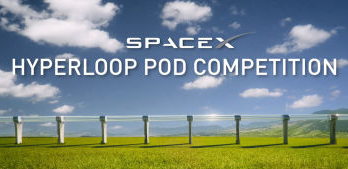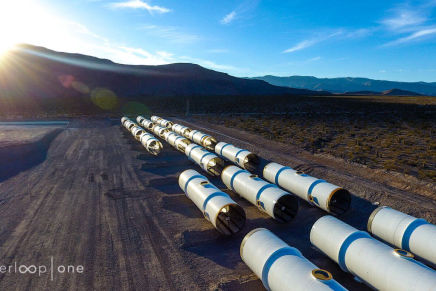1799
Inventor George Medhurst proposed an idea to move goods through cast-iron pipes using air pressure. In 1844, he built a railway station (for passenger carriages) in London that relied on pneumatics until 1847.
The Hyperloop is a futuristic mode of transportation that would propel people- or cargo-filled pods over long distances using a system of tubes where pods travel through linear induction motors magnetic acceleration at speeds of up to 700 mph.
Inventor George Medhurst proposed an idea to move goods through cast-iron pipes using air pressure. In 1844, he built a railway station (for passenger carriages) in London that relied on pneumatics until 1847.
Throughout the mid-1850s, several more pneumatic railways were built in Dublin, London, and Paris. In the mid-1860s, South London constructed the Crystal Palace atmospheric railway, which ran through a park. This was eerily similar to the current Hyperloop.
The Beach Pneumatic Transit, which operated in Manhattan from 1870 to 1873, was New York City's earliest subway predecessor. It ran at the fee of 25 cents. Affordable.
Most major cities used pneumatic tube systems to transport mail and other messages. Some still exist today at banks, hospitals, and factories.
American rocket pioneer Robert Goddard designed a train that would go from Boston to New York in just 12 minutes. It would’ve floated on magnets inside a vacuum-sealed tunnel.
Scientists and science fiction writers imagined transit systems that would work like a Hyperloop.
Researchers at MIT designed a vacuum-tube train system for a trip from NYC to Boston and in the early 2000s, ET3 designed a pneumatic and maglev train. In 2010, the Foodtubes project used this model for transporting food.
The state of California planned the California High-Speed rail, which had a top speed of a 140 mph. Yayy. If you felt like i just did, you are not alone. That’s what Elon Musk felt and he got an idea.
Musk released an alpha design for the LA/San Francisco Hyperloop in the form of a document titled Hyperloop Alpha. The Hyperloop was born in this 57 page document.

In the Constitution of the Hyperloop, Musk summarizes how the Hyperloop works:
“Hyperloop consists of a low-pressure tube with capsules that are transported at both low and high speeds throughout the length of the tube. The capsules are supported on a cushion of air, featuring pressurized air and aerodynamic lift. The capsules are accelerated via a magnetic linear accelerator affixed at various stations on the low pressure tube with rotors contained in each capsule. Passengers may enter and exit Hyperloop at stations located either at the ends of the tube, or branches along the tube length.”
By magnetically suspending a pod with passengers inside a tube, you can have a moving transportation system that doesn’t have to be held back by the typical restrictions of friction found when the rubber meets the road.
The air pressure within the Hyperloop tube will also be at its minimum, which will also help to reduce friction and increase the speed of travel of the pod as it cruises from city to city.
By keeping a mostly straight-pathed journey across flat terrain, you’ll be able to ensure the highest degree of momentum without any sharp turns that would slow down speed and efficiency.

In 2016, SpaceX hosted the Design Pod Competition for the Hyperloop, and the winning design by MIT used magnets for levitation, though that is the start. While these contests are a great way to move the Hyperloop concept forward, it all comes down to money. Are businesses interested in investing in the vision that Hyperloop is presenting for the future? One word: Yes.
Many routes have been proposed such as LA - San Francisco, Toronto - Montreal, Paris - Amsterdam, and I’m going on a tangent. Local Governments have reached agreements with these companies to begin infrastructure development.
Hyperloop One’s goal is to deliver a fully operational Hyperloop system by 2021 and has completed a 500-meter Development Loop (DevLoop) in North Las Vegas.
Hyperloop Technologies has already built their first test facility at the Apex Industry Park in Las Vegas, Nevada. And in May 2018 they completed their first successful systems test.
A hyperloop must offer the kind of service, pricing, and safety record that will draw paying passengers away from current modes of transportation, including airlines, trains, and the personal car. Those systems may not be perfect, but in the end it works for most. To even have a shot, Hyperloop must start by finding a way to maneuver through the bureaucratic regulations that govern what gets built where. The people running these companies insist that it won’t be as hard as it seems and that they’re already working with eager governments to get their systems built, many deals have been made.
